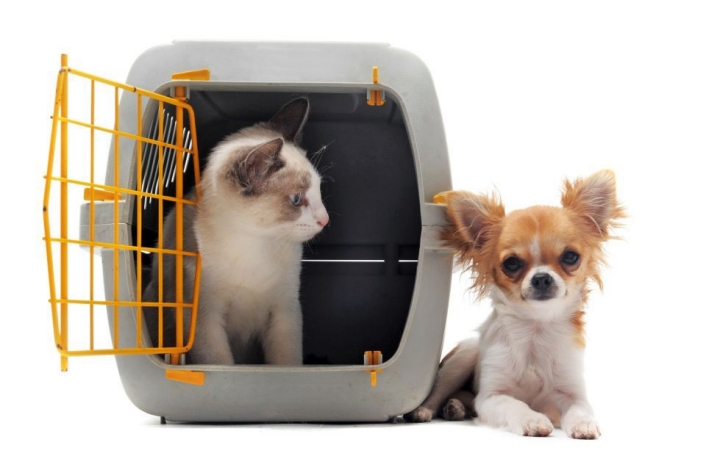Pet Disaster Plan
Prepared by the County of San Diego Department of Animal Services
We recommend that everyone prepares for an emergency by gathering necessary supplies ahead of time, and practicing your family disaster plan. For most of us, pets are part of our family so we need an emergency plan to protect them as well.




NEVER leave your pet chained outside and if you evacuate your home DO NOT LEAVE YOUR PETS! You may not be able to return to your home or animal enclosure for an extended period of time. In addition, structural damage to your home or animal enclosure may allow your pet to escape, or to permit other animals or natural elements to enter and hurt your pet.
Be prepared to quickly evacuate with your pet(s) if you become aware of any risk in your neighborhood. If an evacuation seems possible, do it earlier rather than later. Do not wait until the last minute. Disaster-related weather, visibility and road conditions could present additional challenges, but especially for those transporting livestock.
Many pets and livestock have been lost in previous emergencies. One of the best protection methods is to microchip your animal.
The permanent microchip holds your contact information and can be scanned at many shelters and veterinarian offices. Notify the microchip company if you change your address or phone number.
Start a buddy system with your neighbors and agree to check on each other’s animals if someone is not home during an emergency. Consider placing an authorization in your veterinarian’s file for your neighbor to request emergency veterinary treatment for your animal(s) in your absence.
If you have a dog, put its picture in the free app Finding Rover for a better chance of being reunited if it does get lost.

Create a pet emergency kit with sufficient supplies for each pet:
- Leash, harness or pet carrier (large enough for your pet to stand and turn around in) and a muzzle for any dog known to be aggressive or defensive around people or other animals
- Stake and tie-out for each dog
- Properly-fitting leather or nylon collar with securely attached license tag for dogs, AND identity tag listing your address and phone number for cats and dogs
- All animals should have some type of identification on them
- One week supply of water; pet food (preferably dry); unbreakable water bowl or dispenser; sturdy food bowl or feeder; manually-operated can opener and plastic can lid for canned food
- Copy of current veterinary records including rabies and wellness vaccination certificates; at least a week’s worth of any needed medicines and supplies in a waterproof container; proof of current vaccinations may be required by boarding facilities
- Pet first aid kit including wound cleaning and bandaging material
- Supplies to collect and dispose of pet waste like plastic bags, scooper, or cat litter
- Several recent photographs of your pet in waterproof container in case it gets lost
- List of phone numbers and addresses of local organizations that may provide emergency assistance including your veterinarian, local animal services agencies, County Animal Services, humane society, agricultural associations, feed store, state/county veterinarian and the American Red Cross
As part of your preparation, locate kennels, veterinary facilities or other boarding and pet-friendly lodging near your home. Look for those that have easy access from primary and alternate evacuation routes in and out of your neighborhood.
During a disaster listen to local emergency broadcast radio stations for information on shelters and holding areas that may be available to temporarily house your pets and livestock.


Livestock Considerations
- Map primary and alternate evacuation routes and temporary boarding sites or livestock holding facilities.
- Horse owners should have a halter and lead line for each horse. Keep them on or near its enclosure gate.
- Owners of any livestock should post emergency contact information in a conspicuous place.
- Make arrangements to ensure that suitable vehicles, trailers, handlers and drivers are available to transport livestock. Be sure your animals are familiar with transporting vehicles before an emergency.
- Make sure horses and other companion animals have microchip identification and that all animals have some identification.
If large animals cannot be evacuated, determine whether they can be moved to a shelter or be allowed to remain in an outside enclosure, based on the type of disaster, and the reliability of the location.






